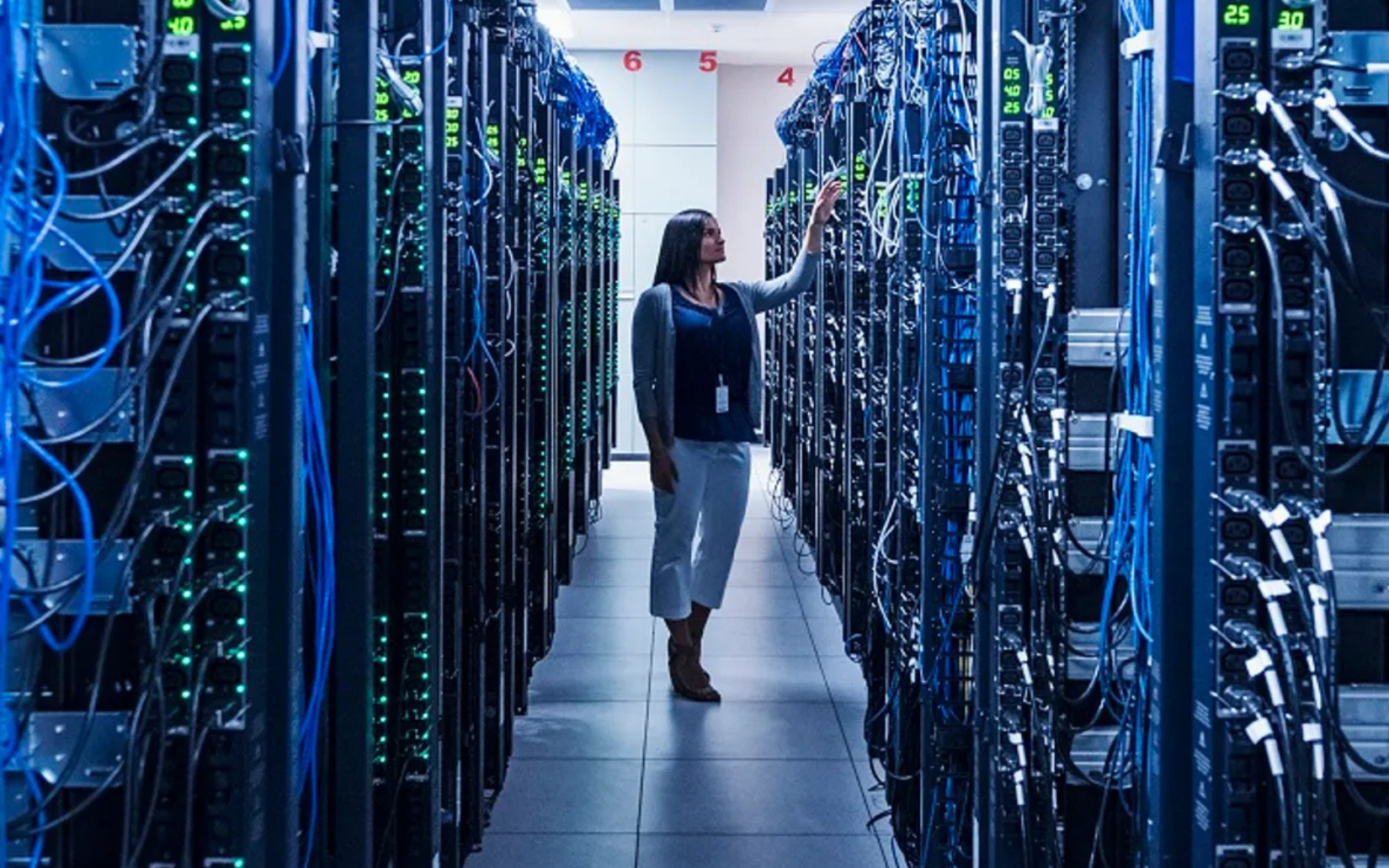Cybersecurity in Building Management Systems and Smart Sites
November 8, 2025

Introduction
Smart buildings are no longer a futuristic idea. Offices, hospitals, schools, and industrial sites now depend on digital systems to control heating, lighting, lifts, and even water. These connected systems improve efficiency and comfort, yet they also increase exposure to cyber attacks. Over the past few years, attacks on Building Management Systems (BMS) have grown in frequency and complexity. Criminals target these systems to steal data, disrupt operations, or cause physical harm.
This blog is for facility managers, IT teams, engineers, and security professionals responsible for the safety and reliability of modern buildings. You will learn how BMS security works, what threats you face, and how to protect your systems from compromise.
A Building Management System is the control centre of a smart site. It connects devices such as HVAC units, lighting panels, access controls, and sensors into one network. A single breach in that network can affect every connected device. For example, if a hacker gains control of the heating system in a hospital, patients and staff could face extreme conditions. The risk is not theoretical. Incidents like this have occurred around the world, and each one shows the same lesson — digital control requires digital defence.
The topic matters now because modern buildings rely on connectivity. As operational technology merges with information technology, attack surfaces grow. Regulatory frameworks, such as the UK’s Network and Information Systems Regulations (NIS2), demand stronger cyber resilience. Understanding these risks and learning how to reduce them is no longer optional.
Understanding the Modern Smart Site
A smart site uses interconnected devices to monitor and control building functions. Sensors collect data, control systems analyse it, and automated responses optimise energy use and safety. The BMS ties all this together. It operates through protocols like BACnet, Modbus, and KNX. These protocols were not designed with cybersecurity in mind. Many still use unencrypted communication.
The shift from isolated systems to cloud-connected platforms has transformed how buildings are managed. Remote monitoring and predictive maintenance have become standard practice. While these capabilities improve efficiency, they also introduce new entry points for attackers. Each device, connection, and integration adds risk.
Imagine a large office tower with hundreds of sensors connected to a central BMS. The system automatically adjusts temperature and lighting based on occupancy. It is convenient and saves energy, but if the BMS interface uses a default password or outdated firmware, a cybercriminal could exploit that weakness to gain full access. Once inside, the attacker could lock users out, alter settings, or use the system as a gateway to the corporate network.
These scenarios are not limited to big cities. Small organisations also use BMS platforms. As more systems connect through the Internet of Things, attackers have more opportunities. A smart building without security is like a building with its doors unlocked.
Common Threats and Vulnerabilities
BMS and smart site infrastructure face several clear threats. The most common include weak authentication, outdated software, and unsegmented networks. Many systems still run on legacy technology. Some have never received security updates because vendors no longer support them. Others rely on shared credentials known to multiple contractors.
Ransomware remains a serious problem. In 2023, multiple facilities across Europe were hit by attacks that locked users out of their BMS dashboards until a ransom was paid. In one example, attackers encrypted the control interface of a major office complex, causing a complete shutdown of the HVAC system for two days. This not only disrupted operations but also breached health and safety compliance.
Another rising threat is supply chain compromise. BMS platforms often depend on third-party software and hardware components. If one supplier suffers a breach, the attacker might inject malicious code during installation or updates. When that code reaches your network, it opens a path for intrusion.
Unsecured remote access also exposes systems to risk. Many maintenance teams use remote desktop or VPN tools to connect to BMS devices. If those connections are not protected with multifactor authentication, attackers can hijack sessions. They can then move laterally through the network and access sensitive data.
Social engineering plays a growing role. Attackers often target employees with phishing messages disguised as maintenance notifications or system alerts. One successful phishing email can give them the credentials needed to infiltrate a BMS portal.
Ignoring these risks has real consequences. An attacker who disables access control might lock staff out of critical areas. If they manipulate temperature or pressure systems, they could cause structural or health hazards. The cost of remediation can be significant. Insurance claims, reputation loss, and regulatory penalties follow soon after.
The Cost of Inaction
When BMS security fails, the impact goes beyond data loss. It affects physical safety, comfort, and trust. A compromised building system may leak occupant data such as names, badges, or movement logs. If an attacker manipulates lighting or fire alarms, the consequences can be dangerous.
In 2022, a manufacturing site in Germany reported that an attacker exploited a weak BMS password to stop ventilation fans. Production halted for several hours while technicians restored control. The incident caused financial losses and raised questions about compliance with ISO 27001 security standards.
According to the UK’s National Cyber Security Centre (NCSC, 2024), cyber incidents affecting operational technology have increased by more than 30 percent in the past two years. Smart buildings are now viewed as critical infrastructure. Failing to secure them leaves gaps that criminals and state actors are eager to exploit.
Building owners often underestimate these risks because the systems seem separate from IT networks. In practice, they are not. Modern BMS platforms often share connections with corporate systems. Attackers know this and use the BMS as a bridge to more valuable targets.
Building a Secure Foundation
To reduce exposure, organisations must adopt a layered security approach. Start by identifying all devices connected to your BMS. You cannot protect what you do not know exists. Create an inventory of every controller, sensor, and access point.
Next, isolate your operational technology from your corporate IT environment. Network segmentation limits the spread of an attack. Use firewalls and strict access controls to separate these networks. Only authorised personnel should have access to the BMS.
Replace default passwords immediately. Require strong, unique credentials for each account. Add multifactor authentication for remote access. These simple steps stop many common intrusions.
Keep software and firmware updated. Apply security patches as soon as vendors release them. If a device is no longer supported, replace it or isolate it.
Continuous monitoring is essential. Use intrusion detection tools to watch for abnormal network traffic. If a device starts sending data to unknown destinations, treat it as a warning.
Back up configuration files regularly and store them offline. This allows fast recovery if ransomware hits. Test your backups to ensure they work.
Training is another vital part of the foundation. Many breaches start with human error. Staff must understand how social engineering works and how to report suspicious activity.
Cybergen recommends adopting frameworks such as Cyber Essentials, ISO 27001, and NIST Cybersecurity Framework. These provide clear guidelines for assessment, improvement, and governance. Aligning with these standards strengthens your resilience and demonstrates compliance to regulators and clients.
Securing Remote Access and Cloud Integration
Remote connectivity is one of the biggest conveniences of smart sites. It allows engineers to adjust systems without being on-site. Yet this feature is also one of the biggest risks.
Only use secure, encrypted channels for remote connections. Virtual Private Networks should require multifactor authentication. Never allow direct access to control systems from public internet connections.
Cloud-based BMS platforms are growing in popularity. They deliver analytics, predictive maintenance, and central control for multiple buildings. When using the cloud, ensure that data is encrypted both in transit and at rest. Choose providers that comply with recognised security standards such as ISO 27018 and SOC 2.
Review access permissions often. Remove inactive accounts. Limit administrative rights to those who need them. Implement session timeouts to reduce the chance of hijacking.
Cybergen advises regular penetration testing of both on-premises and cloud infrastructure. Simulated attacks reveal weaknesses before real attackers find them. Testing should include both network and application layers.
Monitoring and Incident Response
Even the most secure systems are never fully immune to attack. What matters is how fast you detect and respond. Establish an incident response plan tailored for BMS environments. The plan should identify who is responsible for technical response, communication, and recovery.
Implement continuous logging for all BMS activities. Store logs in a secure, central location. Regularly review them for anomalies such as login attempts from unknown IP addresses or unexpected configuration changes.
If an incident occurs, act quickly to isolate affected systems. Disconnect compromised devices from the network to prevent spread. Notify stakeholders, service providers, and relevant authorities where required by law.
Post-incident review is equally important. Analyse how the breach happened and update defences to stop recurrence. Continuous improvement is part of maintaining security maturity.
Designing for Cyber Resilience
Security should not be an afterthought. It must be built into design and procurement. When selecting new BMS equipment, request details about cybersecurity features. Ask suppliers whether their devices support encryption, authentication, and secure updates.
Use risk assessments before integrating new components. Evaluate how each system connects and what vulnerabilities it introduces. This approach helps avoid hidden dependencies.
Physical security also matters. Protect network cabinets, control panels, and server rooms from unauthorised access. Cyber resilience combines both digital and physical layers.
Cybergen promotes the principle of defence in depth. No single control guarantees safety, but layers of security reduce the likelihood of a complete compromise.
The Role of Management and Culture
Technology alone does not secure a building. Leadership commitment drives real progress. Senior management must treat cybersecurity as a safety issue, not only a technical one.
Assign clear responsibility for BMS security. Integrate it into the organisation’s overall risk management framework. Include it in staff induction, supplier contracts, and audit processes.
A positive security culture encourages staff to report anomalies without fear. Regular training sessions and open communication help embed good habits. Cybersecurity becomes part of daily operation, not a one-off exercise.
Future Trends and Outlook
As artificial intelligence becomes part of smart building management, new challenges emerge. Automated decision-making systems depend on accurate data. If attackers manipulate that data, they can trick algorithms into unsafe actions.
Edge computing also changes the threat model. Devices process data locally instead of sending it all to the cloud. This reduces latency but adds more endpoints to protect.
Regulatory attention is increasing. The UK government’s Product Security and Telecommunications Infrastructure Act requires connected devices to meet specific security standards. Compliance will soon be a legal requirement, not a choice.
Investment in cybersecurity will become as essential as investment in fire safety. Both protect lives and assets.
Summary
Smart buildings bring efficiency, comfort, and insight, yet they also bring new risks. Building Management Systems connect physical and digital worlds, which makes them attractive to attackers. Every connected sensor, switch, and server represents an entry point.
You can defend your site by understanding the systems in place, identifying vulnerabilities, and applying best practices. Regular maintenance, network segmentation, multifactor authentication, and monitoring all contribute to strong protection.
Security must become part of the culture. Leadership should treat it as a core business function. Staff should see it as part of their role.
Cybergen helps organisations strengthen resilience across operational and information technology. Take action today to secure your building systems and protect the people who depend on them.
References
National Cyber Security Centre (2024) Securing Operational Technology and Industrial Control Systems. London: NCSC.
International Organisation for Standardisation (2023) ISO/IEC 27001: Information Security Management Systems Requirements. Geneva: ISO.
UK Government (2024) Network and Information Systems Regulations 2024 (NIS2). London: HMSO.
Gartner (2025) Trends in Smart Building Cybersecurity. Stamford: Gartner Research.
Cybergen (2025) Building Cyber Resilience in Smart Infrastructure.
Ready to strengthen your security posture? Contact us today for more information on protecting your business.
Let's get protecting your business
Thank you for contacting us.
We will get back to you as soon as possible.
By submitting this form, you acknowledge that the information you provide will be processed in accordance with our Privacy Policy.
Please try again later.
Cybergen News
Sign up to get industry insights, trends, and more in your inbox.
Contact Us
Thank you for subscribing. It's great to have you in our community.
Please try again later.
SHARE THIS
Latest Posts









